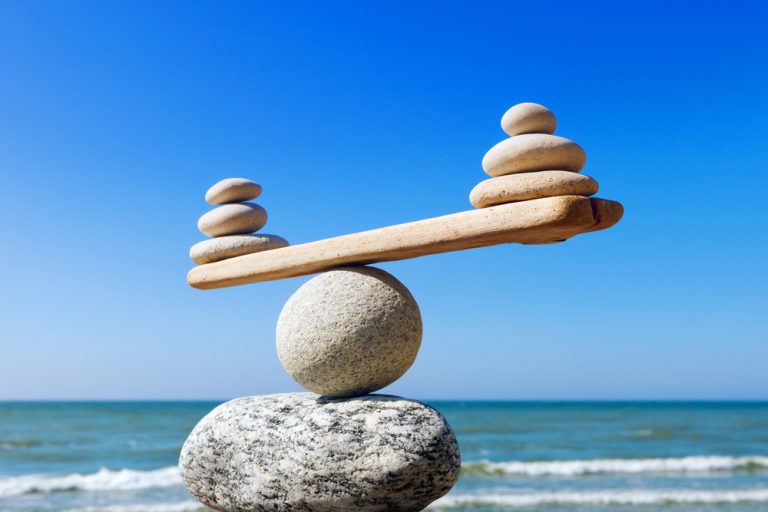If you’re feeling anxiety about downsizing from two household incomes to one, you’re not alone. Due to the high cost of living—regardless of what area you’re in— and other costs like student loans and health care, many individuals feel like they need to have two incomes. However, with recent economic uncertainty many households have been forced to downsize. Even families who have been unaffected thus far may be tightening budgets to help prepare for the unexpected.
On the flip side, many couples also feel that it’s important to keep one of them at home, especially those with younger children. With most cities reopening after a spring of stay-at-home orders, some families are deciding that they would rather not have both parents go back to work. But, how can a family justify downsizing to one income when they know they need (or think they need) two incomes to survive? And how can an individual who previously had two or more income streams adjust if they’ve lost one?
The answer is Parkinson’s Law and the 770 Account.
Parkinson’s Law
Parkinson’s Law, coined from C. Northcote Parkinson (1909-1993), states: “Work expands to meet the time envelope allowed.”
What Parkinson means is that any work will take up the allotted time it’s given; regardless of the circumstance.
For instance, your son or daughter has a book report due in three days, it’s human nature to wait until the latest time on the third day to complete it. The same logic stands for a book report due in thirty days. Your child will wait until day twenty-nine to get it done.
So, how can Parkinson’s Law be related to downsizing from two household incomes to one?
Because Parkinson uses the idea of “filling up the allotted time to get something done” as an umbrella that covers two other principles: “A luxury once enjoyed becomes a necessity,” and “Expenses rise to equal income.”
A Luxury Once Enjoyed Becomes a Necessity
Your daily latte, the imported car you drive, and your $200 jeans are all luxuries. But get used to having those items around long enough, and you start to think of them as necessities. Greater income generates a perceived need for more expensive things. You have the means to justify the end purchase. You don’t need a bigger house, weekly takeout, or subscriptions to every streaming service known to man, but it’s not hurting your bottom line, so these types of habitual luxuries become ingrained in your monthly budget.
Expenses Rise to Equal Income
Most of use were poor college students at one point in our lives; we thought about what we would do with all our extra income once we had degrees and careers. Sure, eating better dinners than instant ramen, frozen pizza, and tuna sandwiches were on the list of things to look forward to once we had bigger paychecks, but we also thought about how much extra we’d be able to stash away for a rainy day, getting out of debt, and not having to live paycheck to paycheck.
Of your multiple income streams, how much were you actually saving monthly? How much debt have you paid off? In spite of making more money, does it still feel like every paycheck gets used up just as quickly as it did when you were waiting tables in college? Somehow, the bigger the paycheck, the more and more needs we seem to find to spend it on.
This part of Parkinson’s Law—expenses rise to meet income—is what makes surviving on one income possible. Just as your expenses increase to equal income, the same goes with a decrease in income. You can decrease your expenses to live on a smaller paycheck. We’re not saying that Parkinson’s Law will automatically make going from two household incomes to one easy. But there are options to help soften the blow of having to survive on one income with dual-income expenses.
How to Downsize Household Income
Take Inventory
The first step you’ll need to take when downsizing your household income is diving deep into credit card statements and receipts to track where your money is actually being spent. This will give you a more complete picture of where you can cut back. Divide your monthly expenses into two categories: expenses you can change and expenses you can’t change.
Lattes, takeout, subscription services, and retail goods are common expenses you can begin to edit out of your spending habits. This isn’t to say you have to stop spending on these items completely; cutting back the frequency with which you buy may be enough. Another great tip is to avoid putting anything on a credit card that you don’t have cash on hand to pay for. Credit card debt is not only one of the most common types of debt in America, it’s also one of the hardest to dig out of.
Some costs that seem unchangeable, like your mortgage or car payments, might actually be more flexible than you think. If you or your partner are no longer working, do you need two cars to commute? Downsizing vehicles, when you factor in car payments, insurance, gas, and maintenance, can save hundreds of dollars a month. If you have a 15-year mortgage, consider refinancing to a 30-year mortgage (interest rates are great right now) to free up immediate funds on a monthly basis.
Prioritize Your Passions
Downsizing to a one household income doesn’t mean saying goodbye to purchases that make you happy. If you’re a self-proclaimed foodie, prioritize part of your budget for eating out and cut back in other areas you don’t care about as much. If you love to travel, create a budget that allows room to save for future vacations. If you can’t live without your monthly massage, set aside money for it and cut back on online shopping.
We’re all different and our priorities aren’t the same. What works for one persons budget doesn’t necessarily work for yours. Decide, as a family, what’s important to you. Focus on spending that brings you the most enjoyment. If you could only splurge on one item this month, what would it be? Answer that question and you’ll have a good idea of what luxury you should try to leave room for in your budget.
One of the reasons budgets fail is because people fail to prioritize what is most important to them. Downsizing from two household incomes to one doesn’t have to mean feeling deprived of the things you love most. When you create too strict of a budget without leaving room for your passions, you’re more likely to get frustrated and break the bank.
Think Long Term
With any goal, you have to understand your “why”. Clearly outline why you’re downsizing to a single income and focus on how it will benefit your family. If you’re downsizing due to a change in economic circumstances, and not by choice, reaffirm what your long-term financial goals are. Don’t let temporary set backs steer you off course.
Consider retirement goals, college tuition for your kids, and the legacy you want to leave behind. What do you want your finances to look like five years from now? 10 years from now? 20? If you’re not downsizing to a single income yet but plan to someday, outline your goals and start acting like you only have one income right now. Put the second income, or additional cash flow streams, into your emergency savings or a wealth building tool like a 770 Account.
The 770 Account
The 770 Account is a dividend-paying whole life insurance policy structured specifically for cash growth (as opposed to being structured to offer the greatest amount of death benefit), referenced in section 770 of the IRS tax code. A 770 Account is an asset that comes with a cash value. For this reason, it’s also referred to as cash value insurance or cash flow banking. It’s this cash value that can assist you in downsizing from two household incomes to one.
Cash value from a policy gives the policy owner immediate liquidity for anything—be it a car, an education, a wedding, or to supplement the shift from a dual-income household to a single-income household.
Borrowing from your policy is not like borrowing from a bank. The insurance company does not charge you the same interest rate to borrow money because you’re borrowing from your own life insurance policy. In addition, you are able to still earn interest on the face value of your policy, regardless of you borrowing against yourself or not. This strategy is called privatized banking, and it keeps you financially safe and optimizes how your money works for you.
At Paradigm Life, we build policies for the cash value advantage, as well as teach individuals why it’s smart to use a dividend-paying whole life insurance policy as a financial strategy. If you’re considering downsizing from two household incomes to one, know that whole life insurance in a 770 Account can be your financial cushion. You can 







